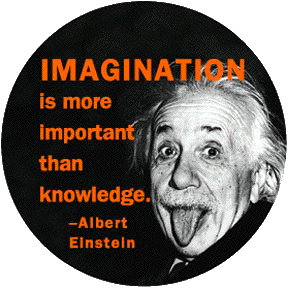***Please give me some feedback/comments on my extremely rough draft, Thanks***
Storytelling is the most powerful way to put ideas into the world today - Robert McAfee Brown
Philip Pullman says "Lyra and Will and the other characters are meant to be human beings like us, and the story is about a universal human experience, namely growing up," in response to his own claim of His Dark Materials being stark realism. Pullman is telling us the story of ourselves, the reaccuring myth of 'the Fall' of Adam and Eve, when they finally know themselves. By growing up we create the stories of our lives and we recreate 'the Fall' by gaining wisdom and knowledge which moves us from innocence into experience.
What does all this have to do with children's literature? As a child, the embodiment of innocence, most people are told stories or read to by their parents or family members to. My Book and Heart Shall Never Part ruminated on the idea of didacticism in children's literature. The didiacticism of storytelling is essential because we use stories to teach, remember, and delight. So by being told stories children are being encouraged to gain knowledge, remember, and have joy which fosters the child away from innocence and into experience. Like on page 433 of The Amber Spyglass when Mary Malone decides to "Tell them [Lyra and Will] stories" where she performs the role of the temptress by telling them of her 'fall' tasting like marzipan when she was twelve years old. This stirs up sensations in Lyra which leads to Lyra's fall. It is interesting how is is not Will who is tempted and falls, but Lyra. And Lyra doesn't really fall does she, she gains knowledge and experience.Which is how we create our own life story, because it is the change and the metamorphosis we go through to advance from innocence and reach the realm of experience.
-----
People have forgotten how to tell a story. Stories don't have a middle or an end anymore. They usually have a beginning that never stops beginning. -Steven Spielberg
-----
Life itself is the most wonderful fairytale of all. -Hans Christian Andersen
-----
To be a person is to have a story to tell. -Isak Dinesen
-----
The trouble with telling a good story is that it invariably reminds the other fellow of a dull one. -Sid Caesar
-----
If you don't know the trees you may be lost in the forest, but if you don't know the stories you may be lost in life. -Siberian Elder



 Symbols and rules for the symbols....sounds like the alethiometer. There are also books that help translate symbols, much like there are for the alethiometer. Mary Malone actually has an I Ching in her office....later she uses it to communicate with Dust. When Lyra asks about it, page 369 in The Subtle Knife, Mary responds by telling Lyra that it is a form of divination, fortune-telling, and it is only up for decoration. Decoration!? Then it just so happens it comes in handy later for Mary. Coincedence that it was only there in her office for decoration....I don't think so. Lyra tells Mary that the I Ching is used to communicate with Dust or Dark Matter.
Symbols and rules for the symbols....sounds like the alethiometer. There are also books that help translate symbols, much like there are for the alethiometer. Mary Malone actually has an I Ching in her office....later she uses it to communicate with Dust. When Lyra asks about it, page 369 in The Subtle Knife, Mary responds by telling Lyra that it is a form of divination, fortune-telling, and it is only up for decoration. Decoration!? Then it just so happens it comes in handy later for Mary. Coincedence that it was only there in her office for decoration....I don't think so. Lyra tells Mary that the I Ching is used to communicate with Dust or Dark Matter.



 Charles Dickens also had a pet raven named Grip.....the Ravens are the American Football team of Baltimore.......
Charles Dickens also had a pet raven named Grip.....the Ravens are the American Football team of Baltimore.......




 Which reminded me of page 181 - 186 in the Sunderland graphic novel, some of which we discussed in class. Page 181, "life is but a dream," then page 182 the author wakes up from his dream, but then on page 186 he says, "Or is this your dream?" speaking to the audience. This question of who actually had the dream is popping up in both of these texts. Why does it matter? Is this a questioning of reality? Is anything ever really real? Or is it all enhanced and twisted through our dreams, imagination, and pretend.
Which reminded me of page 181 - 186 in the Sunderland graphic novel, some of which we discussed in class. Page 181, "life is but a dream," then page 182 the author wakes up from his dream, but then on page 186 he says, "Or is this your dream?" speaking to the audience. This question of who actually had the dream is popping up in both of these texts. Why does it matter? Is this a questioning of reality? Is anything ever really real? Or is it all enhanced and twisted through our dreams, imagination, and pretend.






